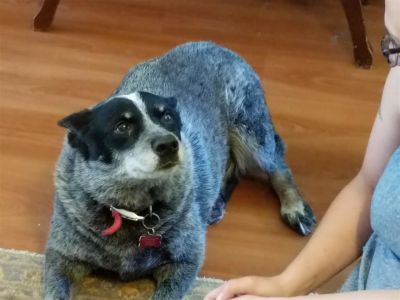Tips for Handling your Dog on a Diet

It’s not uncommon for today’s dog owners to hear their best friend may need to cut back on the treats. After all, over half the dogs in the United States are currently considered overweight. However, it can be hard to handle pets when they’re put on a diet; the begging and whining can be difficult to curtail, and no one like to see their dog feeling sad and rejected. Here are some tips on how you can help improve the experience for your dog and for you!
Watch closely how much you’re feeding and break it up into multiple meals
If you’re currently free feeding your dog, it may be difficult to change that habit. However, when your dog needs to lose weight, it is important to remove the constant access to food. You can even turn mealtimes into an opportunity for bonding. Consult with your veterinarian to find out the appropriate amount and type of food as well as how often they suggest you offer the meals. Offering food more than once or twice per day can help with begging, as your pet will have more opportunities to eat and satisfy those cravings. Having multiple small meals also burns more calories as they spend more time digesting, this helps with weight loss! The important part is remaining as consistent as possible with whichever routine you and your vet decide on. If your schedule prevents you from making these changes, investigate investing in a timed feeder or hiring someone who can drop by to feed the dogs and even help with walking them mid-day.
Don’t cut out treats, just include them as part of the feeding equation
No one wants to deny their best friend a special treat, and many owners utilize special treats to help with dental hygiene or training. The key is to not eliminate these treats, but instead to include them as part of the feeding routines. When working with your vet to determine the appropriate amount of food, make sure to include however many treats are appropriate in those calculations, typically no more than 10% of the caloric intake. These can be included in fun ways, such as training new tricks or to reward them after a grooming session. A great option is to use treats to encourage activity, like a reward at the end of a long walk or other physically demanding activity.
Increase activity levels under the guidance of your vet
While food is most of the battle in weight loss for both humans and dogs, exercise is still a necessary factor. Before starting any new routines, it is essential to consult with your vet and determine your dog’s health and readiness for increased activity. Older dogs or extremely obese dogs may require more gentle activity than even a simple walk; ultimately, the goal is to gradually increase movement and activity level without causing harm. The good news is that an increase in exercise means an increase in the interaction they have with you or another friend or family member. The more mental stimulation they get, the less negative behavior you’ll have to deal with from a bored, hungry dog. Remember, walks aren’t the only way to increase their activity – play with them! If your dog is coming up to you begging for food, ignore those sad puppy eyes and instead use it as an opportunity to play. Eventually you’ll find that playtime has now become their focus and routine instead of food, it’s all about distraction when they’re begging between mealtimes.
If you’re following these tips and still struggling with negative behaviors, Creature Comfort Veterinary House Call Services is here to help. We will come to you, making a convenient house call, where we can discuss your concerns and develop plans specific to you and your dog. Supporting your best friend’s health by creating healthy routines and maintaining an ideal weight will increase their length and quality of life, and Creature Comfort is here to help.


